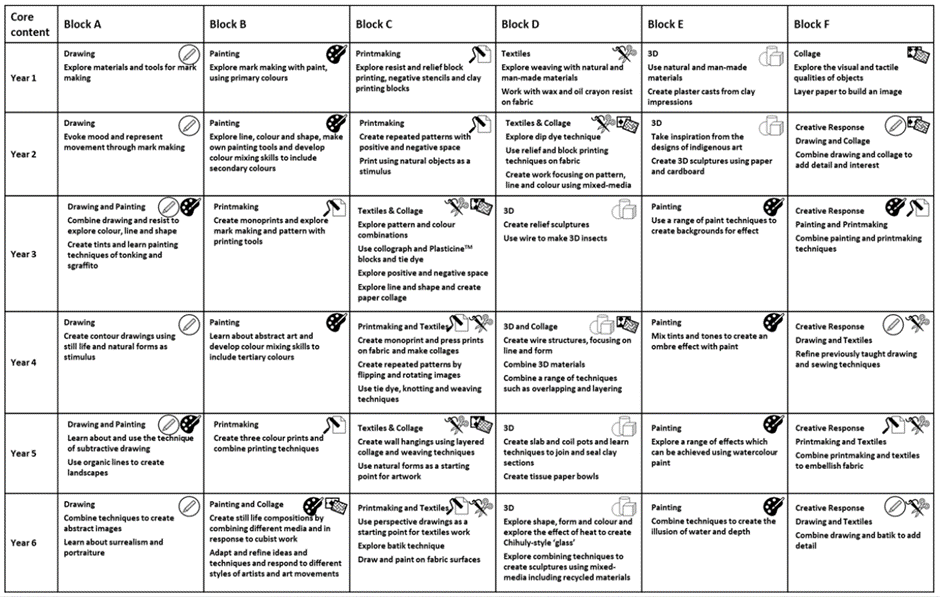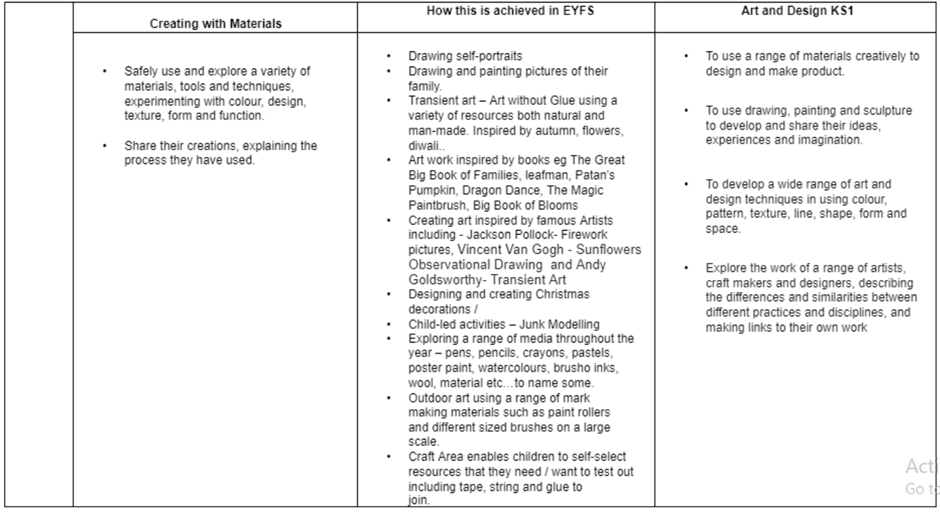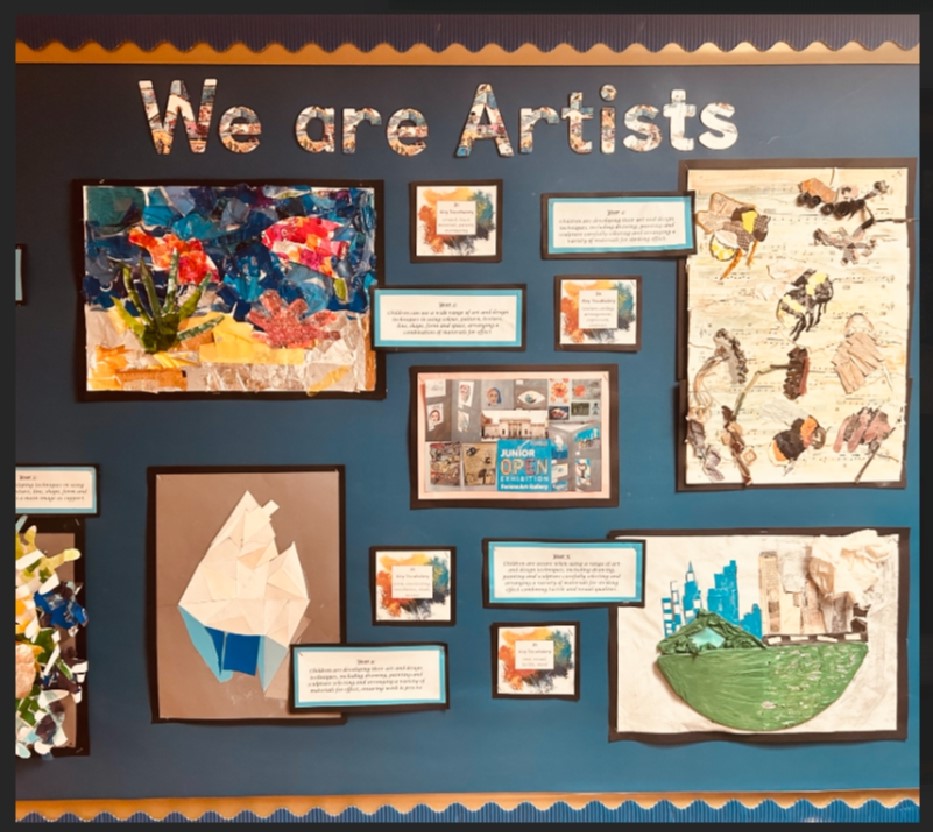Art
At Croxby Primary School we are Artists!
Intent
Our Art curriculum is designed to engage, inspire and challenge pupils, whilst equipping them with the knowledge and skills to be able to experiment, invent and create their own works of art. As pupils progress, they should gain a deeper understanding of how art and design reflects and shapes our history, and how it contributes to the culture, creativity and wealth of our world.
We want our children to love art and design! We want them to have no limits to what their ambitions are and to grow up wanting to be illustrators, graphic designers, fashion designers, curators, architects or printmakers.
We want to prepare them for the opportunities, responsibilities and experiences of later life. We want our children to use the vibrancy of our great city as inspiration, to learn from other cultures and respect diversity. To that end, we have carefully selected a wide range of unique and diverse artists, craft makers and designers for children to study from our surrounding areas.
Implementation
Croxby adopted the CUSP Art curriculum starting in September, 2023.
This is organised into blocks with each block covering a particular set of artistic disciplines, including drawing, painting, printmaking, textiles, 3D and collage. Vertical progression in each discipline has been deliberately woven into the fabric of the curriculum so that pupils can revisit key disciplines throughout their Primary journey at increasing degrees of challenge and complexity.
In addition to the core knowledge required to be successful within each discipline, the curriculum outlines key aspects of artistic development in the Working Artistically section. Each module will focus on developing different aspects of these competencies. This will support teachers in understanding pupils’ development as artists more broadly, as well as how successfully they are acquiring the taught knowledge and skills.
Key aspects to learning:
Substantive knowledge - this is the subject knowledge and vocabulary used throughout this ambitious art curriculum which focuses on excellence in this subject through a myriad of media and incredible artists.
Substantive concepts - are the big ideas, and the golden threads, that run through a coherent and cohesive art curriculum. In addition to the core knowledge required to be successful within each discipline, the curriculum outlines key aspects of artistic development in the Working Artistically section. Each module will focus on developing different aspects of these competencies.

Disciplinary knowledge – this is the use of knowledge and how children become a little more expert as an artist by Thinking Artistically through CUSP enquiry-based learning.
*Knowledge notes are an elaboration in the core knowledge found in knowledge organisers. Knowledge notes focus pupils’ working memory to the key question that will be asked at the end of the lesson. It reduces cognitive load and avoids the split-attention effect.
*Retrieval practise is planned into the curriculum through spaced learning and interleaving and as part of considered task design by the class teacher. Teaching and learning resources and provided for class teachers so they can focus their time on subject knowledge and task design.
*Explicit Vocabulary is purposefully sequenced into the CUSP curriculum to ensure Tier 2 and 3 vocabulary are explicitly taught along with the etymology and morphology, relevant idioms and colloquialisms to ensure learning sticks. We aim to provide a high challenge with low threat culture and put no ceiling on any child’s learning, instead providing the right scaffolding for each child for them to achieve.
*Misconceptions are explicitly revealed as non-examples and positioned against known and accurate content as pupils become more expert in their understanding.
*Cumulative quiz questions - Feedback, low-threat quizzes, thinking hard tasks and structured assessment tasks all contribute towards the bigger picture of how well pupils retain and remember the content.
Impact
The impact of this curriculum design will lead to outstanding progress over time across key stages relative to a child’s individual starting point and their progression of skills.
HOW DO WE KNOW WHAT CHILDREN HAVE LEARNED?
- Questioning
- Pupil Sketch Book Study (talking about learning with the children)
- Talking to teachers
- Low stakes ‘Drop-in’ observations
- Quizzing and retrieval practise
- Live feedback
Children will therefore be expected to leave Croxby reaching at least age-related expectations for art. Our art CUSP curriculum will also lead pupils to be enthusiastic artistic learners.
What is my child learning?
Here is the CUSP art long-term overview.

EYFS
The Early Years Foundation Stage Curriculum supports children’s understanding of working artistically when working within the early years area of ‘Expressive Arts and Design’. Through focusing on using a range of materials, painting, drawing/line, sculpting and looking at colour, pattern, texture and shape, our 3 to 5 year olds are able to develop strong foundational skills when working artistically.
We achieve this by encouraging our children to use what they have learnt about media and materials in original ways, thinking about uses and purposes. As part of our curriculum, we explore the work of artists through stories and have discussions where we evaluate how the work makes us think and feel. Our foundation stage pupils are supported to represent their own ideas, thoughts and feelings through the choices that they make when selecting the equipment and resources that they want/need to use as well as using ideas that have been inspired by artists they have come across.
Our experienced early years practitioners are able to skilfully question choices made to engage in artistic conversations using questions such as, ‘show me again how you drew that…, can you tell me what you can do next to improve the accuracy of your drawing?’ What materials could we use to create that texture? Why is it a good idea to use different textures in our art?’ or ‘Tell me what you liked/disliked about the work of…? How have you used that in your work, can you show me?’


